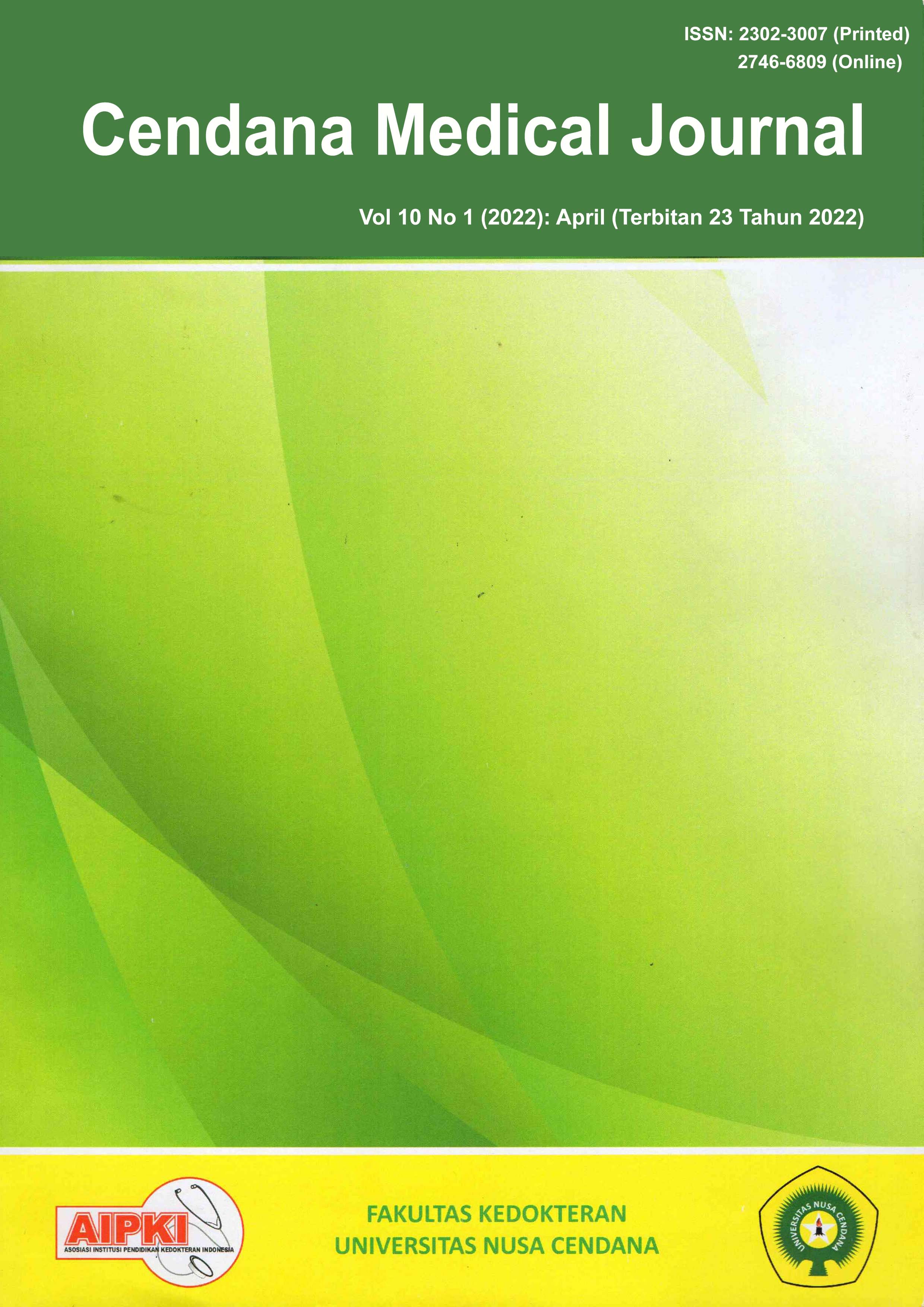ANALISIS PENGAMBILAN KEPUTUSAN PASANGAN USIA SUBUR UNTUK TIDAK BERPARTISIPASI DALAM PROGRAM KB
Abstract
ABSTRACT
The increasing rate of population growth in the 21st century era has become a separate problem for countries in the world. Indonesia is the fourth most populous country in the world, China, India and the United States. The high rate of population growth that is not accompanied by an increase in the quality of the population, the Indonesian government makes efforts to handle and control population growth by implementing the Family Planning program to improve the welfare of mothers and children and create happy and prosperous small families. The purpose of this study was to determine how the fertile couple's decision not to participate in the family planning program at the Kapan Health Center. This type of research is a qualitative research with an exploratory design. The selection of informants used purposive sampling, collecting ten people, namely PUS mothers who were recorded as not actively using family planning, married, >35 years old and had >3 children. Collecting data by means of in-depth interviews, observation, and documentation. Data were analyzed and presented in the form of narrative text. The results showed that husband/family support influenced the mother's decision not to use family planning, health/family planning officers provided information about family planning through direct counseling and mass media, most of the informants chose not to participate in family planning because of the perceived side effects and the use of natural family planning. The results of the writing can be obtained with the key that EFA's decision not to participate in the family planning program is motivated by the support of the husband/family and the mother feels that it is not suitable for the family planning used and the natural use of family planning. Therefore, it is hoped that the role of the public health center can involve the role of the husband in providing information about the importance of the family planning program for families so as to increase the participation of EFA in the family planning program.
Downloads
References
2. Puspitasari D, Nurunniyah S. Dukungan Keluarga dalam Keikutsertaan KB pada Pasangan Usia Subur di Desa Argomulyo Sedayu Bantul Yogyakarta Family Support in Family Planning Participation of Reproductive Age. Ners dan Kebidanan Indones. 2014;2(2354–7642):93–8.
3. Kementerian Kesehatan RI. Profil Kesehatan Indonesia Tahun 2019 [Internet]. Hardhana Boga, sibuea Farida, Winne W, editor. Short Textbook of Preventive and Social Medicine. Jakarta: Kementrian Kesehatan RI; 2020. Tersedia pada: https://pusdatin.kemkes.go.id
4. Badan Pusat Statistik. Berita Resmi Statistik [Internet]. 2021 [dikutip 24 Maret 2021]. Tersedia pada: www.bps.go.id
5. Prasanti D. Penggunaan Media Komunikasi Bagi Remaja Perempuan dalam Pencarian Informasi Kesehatan. LONTAR J Ilmu Komun [Internet]. 2018;6(1):13–21. Tersedia pada: https://www.coursehero.com/file/48496770/INSTRUMEN-PENGUMPULAN-DATApdf/
6. BKKBN. Pedoman Pengelolaan Pusat Informasi dan Konseling Remaja dan Mahasiswa [Internet]. Wirdhana I, editor. Jakar: Direltorat Bina Ketahanan Remaja; 2012. Tersedia pada: http://kesra.jatengprov.go.id
7. Maryam S. Analisis Persepsi Ibu Tentang Program Keluarga Berencana (KB) dengan Penggunaan Kontrasepsi di Desa Sumberdadi Kecamatan Sumbergempol Kabupaten Tulungagung Tahun 2014. J Univ Tulungagung Bonorowo [Internet]. 2014;1(2):65–71. Tersedia pada: https://journal.unita.ac.id/index.php/bonorowo/article/download/16/13/
8. Badan Pusat Statistik. Badan Pusat Statistik Kabupaten Timor Tengah Selatan [Internet]. 2021 [dikutip 9 Mei 2021]. Tersedia pada: https://timortengahselatankab.bps.go.id
9. Kementerian Kesehatan Republik Indonesia. Profil Kesehatan Indonesia 2018 [Internet]. Kurniawan Rudi, editor. jakarta: Kementrian Kesehatan Replublik Indonesia; 2019. Tersedia pada: http://www.depkes.go.id/resources/download/pusdatin/profil-kesehatan-indonesia/Data-dan-Informasi_Profil-Kesehatan-Indonesia-2018.pdf
10. Janah AF, Wiyanto, Hartono. Penerapan Peta Konsep IPA Terpadu untuk Mengukur Minds-On and Hands-On Activity Siswa Sekolah Menengah Pertama. 2018;7(2):13.
11. Puskesmas Kapan. Laporan Bulanan Pengendalian Lapangan Tingkat Kecamatan, Bulan Desember tahun 2020. 2020.
12. Nurjannah S. Faktor-faktor yang Mempengaruhi Unmet Need Pada Pasangan Usia Subur (PUS) di Kelurahan Patehan Yogyakarta. Univ ‘Aisyiyah Yogyakarta. 2017;1–20.
13. Alhamid T, Anufia B. Instrumen Pengumpulan Data [Internet]. Sorong; 2019. Tersedia pada: https://www.coursehero.com/file/48496770/INSTRUMEN-PENGUMPULAN-DATApdf/
14. Sarwono J. Memadu Pendekatan Kuantitatif dan Kualitatif : Mungkinkah ? Ilm Manaj Bisnis [Internet]. 2009;9(2):119–32. Tersedia pada: https://media.neliti.com/media/publications/98208-ID-memadu-pendekatan-kuantitatif-dan-kualit.pdf
15. Sutinah. Partisipasi Laki-laki dalam Program Keluarga Berencana di Era Masyarakat Postmodern. Masyarakat, Kebud dan Polit [Internet]. 2017;30(3):289–99. Tersedia pada: https://e-journal.unair.ac.id/MKP/article/view/4116
16. Yulizar, Rochadi K, Sembiring R, Nababan D, Ester M, Sitorus J, et al. Analisis Faktor-faktor yang Mempengaruhi Partisipasi PUS dalam Metode Kontrasepsi Jangka Panjang ( MKJP ) di Kecamatan Langsa Timur. Prepotif J Kesehat Masy [Internet]. 2022;6(1):113–24. Tersedia pada: https://e-journal.unair.ac.id/MKP/article/view/4116
17. Latifah Mei Arumsari; dkk. Hubungan Gukungan Tenaga Kesehatan dengan Perilaku Sadari pada Wanita Usia Suburdi Wilayah Kerja Puskesmas Gondokusuman II Kota Yogyakarta [Internet]. Repository Poltegjogja. 2018 [dikutip 6 Maret 2022]. Tersedia pada: http://poltekesjogja.ac.id
Copyright (c) 2022 Cendana Medical Journal (CMJ)

This work is licensed under a Creative Commons Attribution-NonCommercial-NoDerivatives 4.0 International License.
Copyright Notice

This work is licensed under a Creative Commons Attribution 4.0 International License.

 Adiyanto Desastra Nifueki(1*)
Adiyanto Desastra Nifueki(1*)












